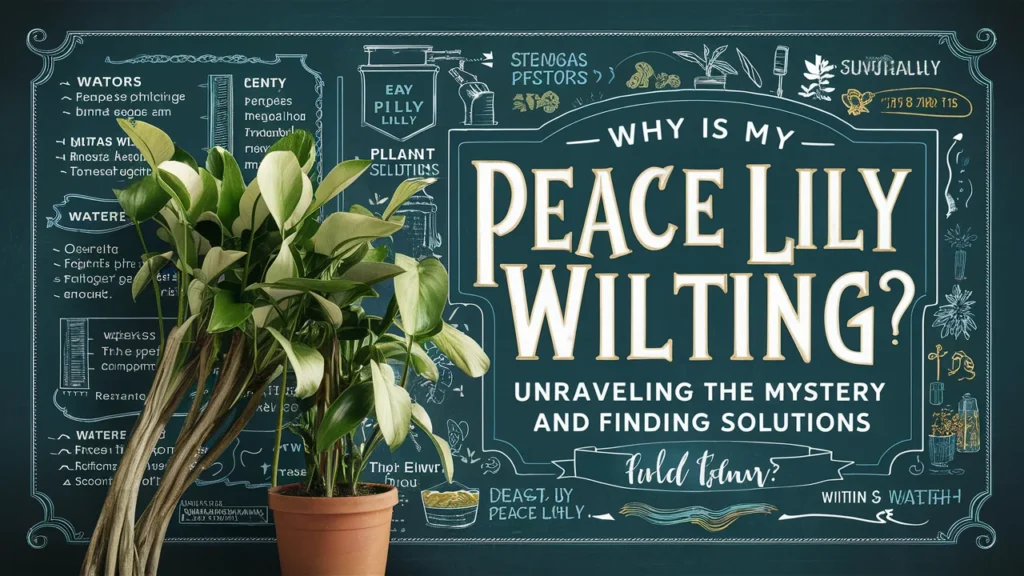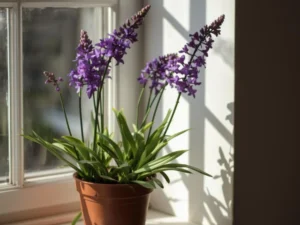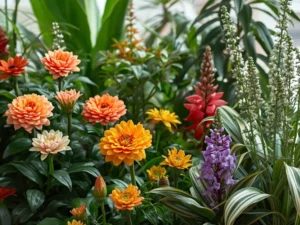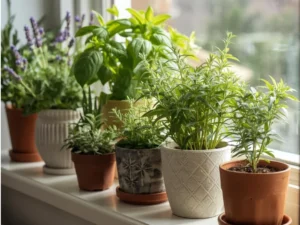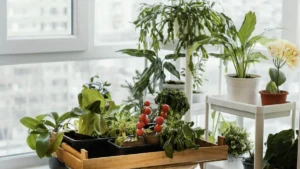Peace Lilies, with their elegant white blooms and lush green foliage, are a favorite among indoor plant enthusiasts. However, encountering wilting leaves can be disheartening. If you’re asking, “Why is my Peace Lily wilting?” you’re likely facing a plant that’s not performing at its best. Understanding the potential causes and how to address them is crucial for restoring your Peace Lily to its thriving state. Let’s explore the common reasons for wilting and effective strategies to bring your plant back to health.
Common Causes of Wilting in Peace Lilies
Watering Imbalance: Underwatering:
Peace Lilies require consistently moist soil. If the plant doesn’t receive enough water, the leaves can become limp and droopy. Check the soil moisture regularly and water when the top inch feels dry. Overwatering: Conversely, overwatering can lead to root rot, which affects the plant’s ability to absorb nutrients and water, causing wilting. Ensure the soil is well-draining and avoid letting the plant sit in excess water.
Temperature Extremes: Drafts and Heat:
Peace Lilies are sensitive to temperature fluctuations. Exposure to cold drafts, hot air from heaters, or air conditioning can stress the plant and cause wilting. Maintain a stable environment with temperatures between 65-80°F (18-27°C).
Humidity Levels: Low Humidity:
Peace Lilies thrive in high humidity. Dry indoor air can cause the plant to wilt. If your home’s air is dry, increase humidity by misting the leaves, using a humidity tray, or employing a room humidifier.
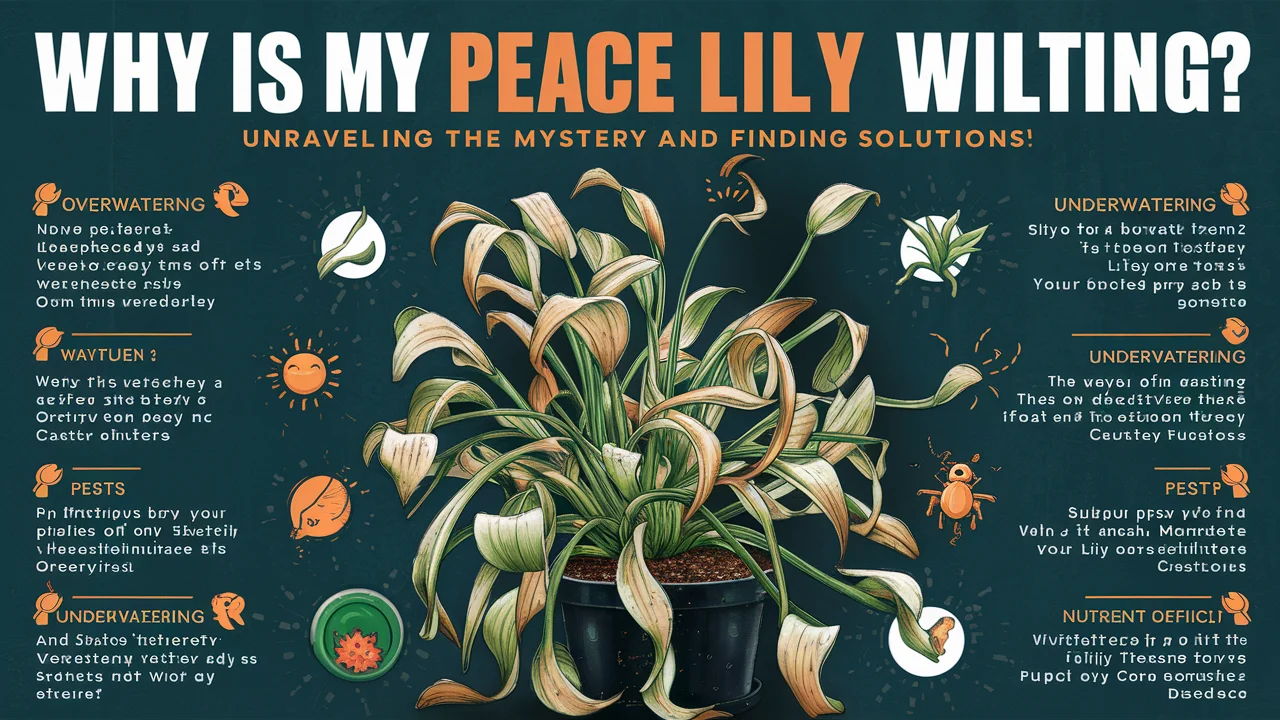
Nutrient Deficiency:
Lack of Essential Nutrients: A Peace Lily that isn’t receiving adequate nutrients may exhibit signs of wilting. Regularly fertilize your plant during the growing season with a balanced, water-soluble fertilizer to ensure it gets the nutrients it needs.
Pest Infestation: Pests:
Insects such as spider mites, aphids, or mealybugs can weaken your Peace Lily and lead to wilting. Check the undersides of leaves and stems for pests and treat infestations promptly with insecticidal soap or neem oil.
Root Problems: Root Rot:
Overwatering can cause root rot, which disrupts the plant’s ability to absorb water and nutrients. Inspect the roots if you suspect rot. Healthy roots should be firm and white; affected roots will appear mushy and dark.
Effective Solutions to Address Wilting

Adjust Watering Habits: Find the Balance:
Ensure that you are neither overwatering nor underwatering your Peace Lily. Water thoroughly when the top inch of soil feels dry and ensure the pot has good drainage to prevent waterlogging.
Stabilize Temperature:
Create a Stable Environment: Position your Peace Lily away from drafts, heaters, or air conditioners. Ensure a consistent temperature range and avoid sudden changes that could
Increase Humidity:
Enhance Moisture: Increase the humidity around your Peace Lily by misting it regularly, placing it on a humidity tray filled with water and pebbles, or using a room humidifier. This will help mimic the plant’s natural tropical habitat.
Provide Nutrients:
Regular Fertilization: Use a balanced, water-soluble fertilizer during the growing season to provide essential nutrients. Follow the manufacturer’s instructions to avoid over-fertilization, which can also harm the plant.
Treat for Pests: Inspect and Address:
Regularly check your Peace Lily for signs of pests. Treat any infestations with appropriate pest control methods, such as insecticidal soap or neem oil, to protect the plant from further damage.
Examine Roots: Check for Rot:
If you suspect root rot, remove the plant from its pot and inspect the roots. Trim away any affected roots and repot the plant in fresh, well-draining soil to promote healthy growth.
Conclusion
If you’re wondering, “Why is my Peace Lily wilting?” the answer often lies in a combination of factors related to watering, temperature, humidity, nutrients, pests, or root health. By carefully assessing these aspects and making the necessary adjustments, you can address the underlying issues and help your Peace Lily recover. With the right care and attention, your Peace Lily can regain its vibrant, healthy appearance and continue to be a beautiful addition to your indoor space.
Frequently Asked Questions
Q1: Why is my Peace Lily wilting despite regular watering?
A: Wilting may occur due to overwatering, which causes root rot and prevents the plant from absorbing nutrients and water effectively. Check for mushy, dark roots and ensure the soil is well-draining.
How to CQ2: Can low humidity cause my Peace Lily to wilt?hange my Password easily?
A: Yes! Peace Lilies thrive in high humidity. Dry indoor air can stress the plant, leading to wilting. Boost humidity by misting the leaves, using a humidity tray, or employing a room humidifier.
Q3: How can temperature affect my Peace Lily’s health?
A: Extreme temperatures or drafts can cause wilting. Keep your plant in a stable environment, maintaining temperatures between 65-80°F (18-27°C) and away from heaters, air conditioners, or cold drafts.
Q4: Could pests be the reason for my Peace Lily’s droopy leaves?
A: Yes, pests like spider mites, aphids, or mealybugs can weaken the plant. Inspect the leaves and stems for signs of infestation and treat promptly with insecticidal soap or neem oil.
Q5: What should I do if my Peace Lily’s roots are rotting?
A: Gently remove the plant from its pot and inspect the roots. Trim away any mushy or dark roots and repot in fresh, well-draining soil. Avoid overwatering in the future to prevent further rot.

